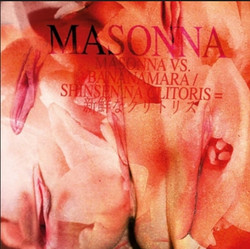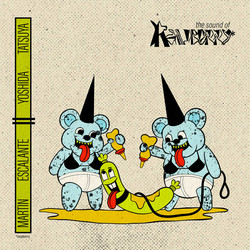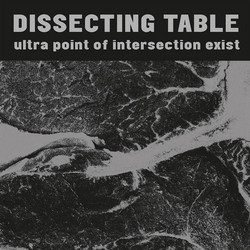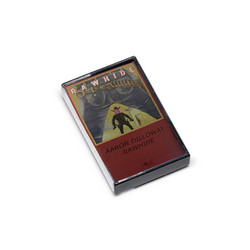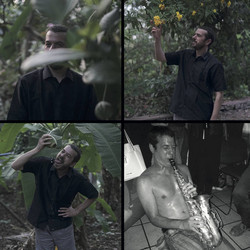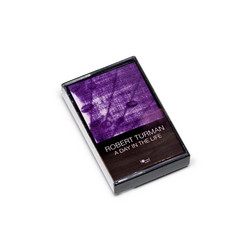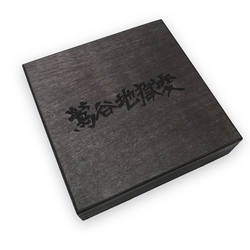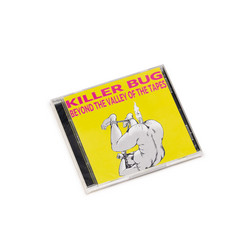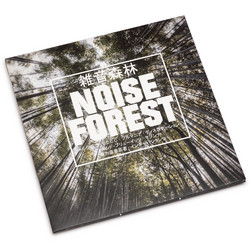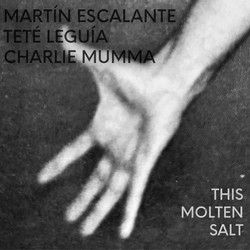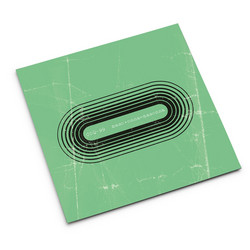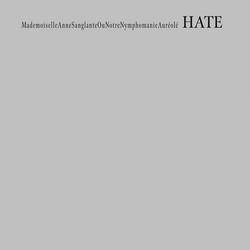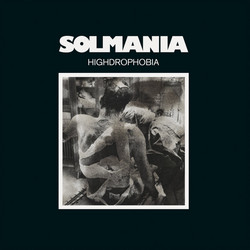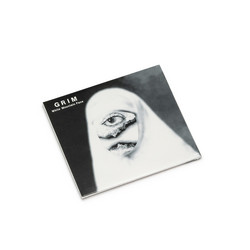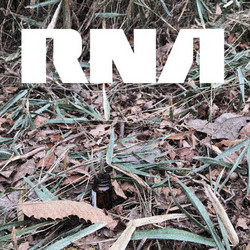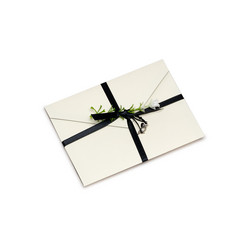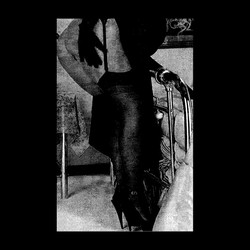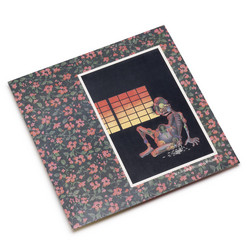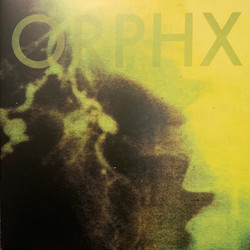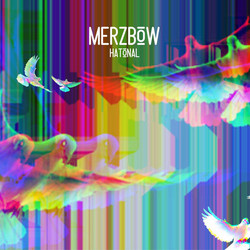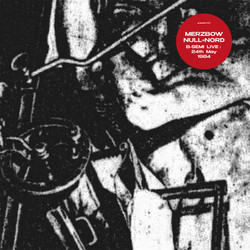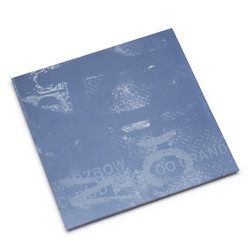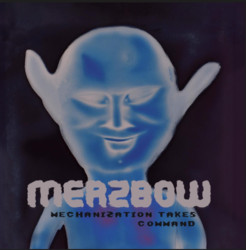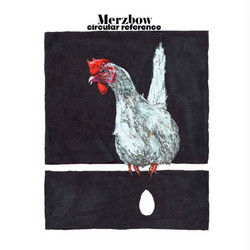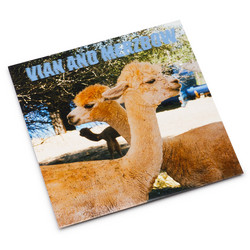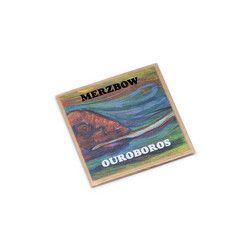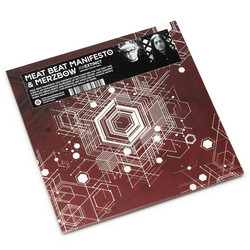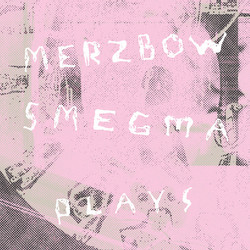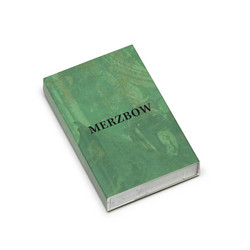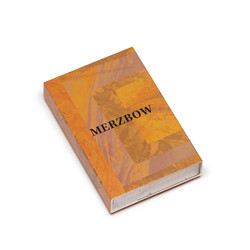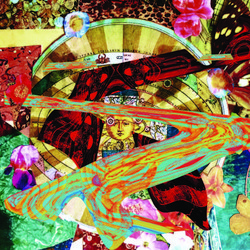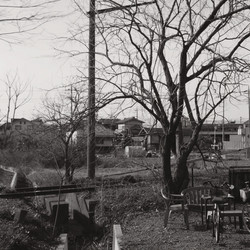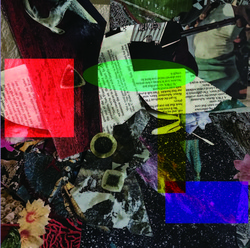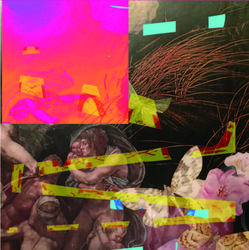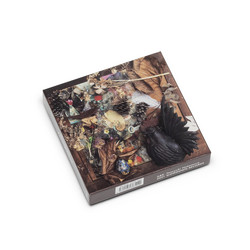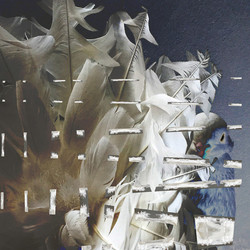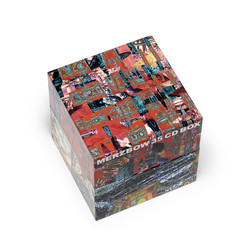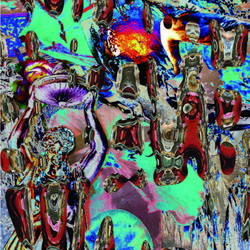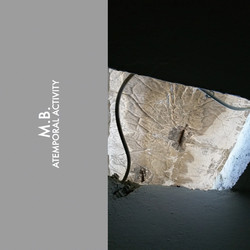Merzbow's unpublished/excavated archive series by Slowdown Records began to be released in 2018, and so far 10 chapters have been published. And those ten chapters were combined in this〈10x6=60CD BOX〉Each chapter consists of six CDs, and this box contains a total of 60 CDs. These chapters have been published in chronological order since 1979, and each chapter has been compiled with some concept or musical feature in mind from a vast array of unreleased sounds from the corresponding period.
The release contains the following 6CD Boxset:
1. Early Sessions
2. Early Cassette Box
3. Loop & Collage
4. Strings & Percussion
5. Tapestry Of Noise
6. Metallic
7. Green & Orange
8. Laptop Noise
9. Go Vegan
10. Ship Of Chicken
-----
1. Early Sessions (6CD BOX)
This box set is derived from cassette tape recordings from 1979 to 1981. As it is the early period of the artist considered to be the God of Japanese Noise Music, Merzbow’s career, it is literally the beginning of Noise/ Music= The Origin of Sound. As these recordings are undifferentiated, it is the so-called “the beginning” of noise, of Merzbow himself and it is the roots of when he first started his musical activities, it resonates in its pure form. It is a recording that lays bare the beginnings of the history of noise music.
CD 1: Hyper Music 1 Vol.1 (Released in April 2018)
CD 2: 23 November 1979 (B) (Released in April 2018)
CD 3: Por#1&2 Vol.1 (Released in May 2018)
CD 4: Por#1&2 Vol.2 (Released in May 2018)
CD 5: Cretin Merz (Released in June 2018)
CD 6: Telecom Live (Released in June 2018)
-----
2. Early Cassette Box (6CD BOX)
The melting of noise/ performance/ rhythm comprised in the 6 titles included in this Early Cassettes Box set are the crystallization of the musical emptiness that was characteristic of early Merzbow. One can say that it is a precious document of the history of noise music. Here is a masterpiece that transcends time which can only be expressed as “Merbzow Music”. And it has been decided that this archival project will become a series and continue into 2019...
CD 1: Collection 010 (Released in July 2018)
CD 2: Yantra Material Action (Released in July 2018)
CD 3: Expanded Musik (2) (Released in Aug. 2018)
CD 4: Musick For Screen (Released in Aug. 2018)
CD 5: Lotus Club: Le Sang Et La Rose (Released in Sept. 2018)
CD 6: Age Of 369 (Released in Sept. 2018)
The above are cassette tape recordings produced from 1981 to 1984.
-----
3. Loop & Collage (6CD BOX)
This 3rd edition of this series compiles recordings dating from 1984~87 and comprises of the following 6 titles, Agni Hotra (2nd Mix), Antimony, Batztoutai Mix, Jinrinkinmouzui, Antimonument Tapes, De-Soundtrack. And〈Loop & Collage〉and compiles all of these titles into 1 box set. As expressed in this symbolic title, the period of the mid 1980s when these works were recorded was a special era for Merzbow that resonated with the aid of mechanical loops and an all-out radicalization of distorted tones which surfaced after the advent of Throbbing Gristle whose appearance influenced not only him but also activated the subsequent blossoming of the Industrial Movement worldwide and it was also an era that consolidated a distinctive style of Industrial Noise music as well. And also, with the tape collage technique that he started to experiment while initially active as a duo, he was able to reach the apex of a complex sound construct and was able to especially release some of the higher profile works in his career such as Batz Tou Tai with Memorial Gadgets, etc. and it was a period where Merzbow was able to leave a mark as a tape music maestro.
Among these 6 works, there exists both an industrial noise tone sensibility that makes great use of extremely distorted resonance and an aspect of a collage with the remains of a sketch, created with tape material. And each element with a different balance, competes fiercely against each other. Included in the works of this series are many alternative versions, outtakes and demo versions of tracks of original pieces that were issued before. From these alternative track’s presence, you can notice that during this period, while in the midst of a conversation between being in the margin of detailed revision and possibilities that lingers always with techniques such as monomanical tape collage and while creating his usual versions, Merzbow was able to produce.
During the transition of Merzbow’s sound, he brought to the forefront, a more harsh noise style that had the capacity to black out your hearing and the reason for this is because he became more active performing live entering the 1990s. While viewing his works of this era constructed with the focus on sampling collage techniques, one might feel a momentary degrading of the sound pressure but then again, due to this method, the recording’s freedom and resonance, multifacetedness and the meticulous editing that is not prohibited to the live performance’s reproductivity is a huge affinity in these works of his. Even if you uncover the difference between other noise music and the music of Merzbow as well as attempting to listen deeply to his latter works, in order to understand the magnetism of this sound that not limited to just noisy resonance included in Loop & Collage, this series will be quite a big clue. - Yorosz(aka Shuta Hiraki)
CD 1: Agni Hotra (2nd Mix)
CD 2: Antimony
CD 3: Batztoutai Mix
CD 4: Jinrinkinmouzui
CD 5: Antimonument Tapes
CD 6: De-Soundtrack
-----
4. Strings & Percussion (6CD BOX)
Slowdown Records is set to release the 4th edition of Merzbow’s archival series that started in 2018 to release his unreleased/ excavated recordings. This 4th edition box set features albums mainly recorded in 1987 such as the following 6 titles, Environmental Percussion Vol. 1, Environmental Percussion Vol. 2, Crocidura Dsi Nezumi, Material H2, Ecobondage (Another Mix), Enclosure. And〈Strings & Percussion〉 is a box set that compiles all of these titles. In this series, Merzbow compiled all of his works that he musically embodies into an idea that he personally named “Environmental Percussion”. This idea already existed around the time when he released the album, “Material Action for 2 microphones” that was released in 1982. To explained its meaning in more depth, it is the audio outcome that he creates when he hits a floor, walls of a room or he would pick up stuff that was around him or a small item with a contact microphone, amplify it and additionally add treatment of space effects such as reverb, delay.
The main material he would use for this approach was a lump of foamed sterol (he uses it to hit the floor, etc.), plastic cassette case and plastic card (to play the strings of a violin), elastic band (to thrum), toilet paper core (to blow at it), gas stove and table lamp (metal percussion), etc. By using these alternative material, he would get an unplugged clutter that has subtlety and texture, different to distorted effects processed noise. For the album, “Material Action for 2 microphones”, this technique was harnessed to obtain noise like sounds but during this era where he also produced albums such as Ecobondage (1987), Storage (1988) that came afterwards, Merzbow deployed a more musical composition and the most of the albums that are part of this series were also recorded in 1987 as well.
Additionally, for the recordings during this era, he attempted to create sounds with his new hand-made instruments that he build with piano wire, guitar strings, springs, etc. which he strung inside a zinc made hanging wardrobe and played it with a violin bow. This one of a kind instrument had the capacity to create metal junk like sounds when he put various objects inside a corrugated galvanized iron made box and shook it but for this era’s recordings, he used this instrument to emit mainly string instruments like sounds and with this specific sound and Environmental Percussion and additionally with resonance coming out of for example, an electric kokyu, yokobue, tatebue, he would timely mix it in and to help shape the final piece of work. Exactly like the title, this box set is a collection of his works that one can fully enjoy Merzbow’s unique use of “Strings & Percussion” and it is different to the previous series, “Loop & Collage” and one could say that it is a series that focuses on his attempt at, so to speak, the “another side”.
CD 1: Environmental Percussion Vol.1
CD 2: Environmental Percussion Vol.2
CD 3: Crocidura Dsi Nezumi
CD 4: Material H2
CD 5: Ecobondage (Another Mix)
CD 6: Enclosure
-----
5. Tapestry Of Noise (6CD BOX)
Slowdown Records is set to release the 5th edition of Merzbow’s archival series that was started in 2018, where they compiled his unreleased/ dug up works into a box set. For this 5th edition, they compiled together recordings that he did in 1991, focusing on material that included in various tapes, many of them were not given the opportunity to see the light of day and have never been released up until now. It features 6 albums, Cloud Cock OO Grand (Another Mix), Crash For Hi-Fi Tapes, Travelling, Untitled 1991 Vol.1, Untitled 1991 Vol.2, Untitled 1991 Vol.3. “Tapestry Of Noise” is the title of this box set that compiles together, all of these albums into one.
To explain some of the characteristics of his 1991 works, first of all, he began applying newly created musical techniques such as scratching and sampling but at the same time, he ceased to use techniques such as collage that were utilized previously in his album, Batz Tou Tai that were made in the 1980s. To elaborate more on it, it is the more rhythmical and cut-up like methods that emerged with the implementation of sampling delay effects that is included in the effects such as Next and Digitech. The mechanical repetition of the delay sound born out of this method was heavily featured in various forms in this series. With the conversion of sampled voices and its loop range, he was able to for instance, instantly direct the transformation of the scene and speed of the performance, at times create a surging groove from the low end frequency and at other times, create a burst of noise similar to an alarm that has yet to resonate to additionally add fuel to the flames. This method accomplished a wide range of functions.
Also, at the time, he created his works in real time by cutting up sound material taken from several 4 channel cassette players as well as a few 2 channel cassette players and additionally live performances and mixed them together but for this series, the tape material (most of them that was used were 4 channel cassette players) he used, did not use techniques such as cut-up and were processed without that much editing. At the times, to mix the recordings, he used a TASCAM Porta Two player but nowadays, as this sort of equipment does not exist, he used the TASCAM MFP-01 to do the new mix. After Merzbow’s 1989 European Tour, he became more active performing live. It was something that he previously did not do that much of and even in his recorded works, this fact was directly reflected and for the works that were made during the 90s, it focused on the extreme noise sound which was different to the 80s sounds that heavily used collage and other methods. You can see this series as a valuable document of the large turning point of his style and it is also an evocative representation of the template of Merzbow’s works and live performance that came afterwards.
CD 1: Cloud Cock OO Grand (Another Mix)
CD 2: Crash For Hi-Fi Tapes
CD 3: Travelling
CD 4: Untitled 1991 Vol.1
CD 5: Untitled 1991 Vol.2
CD 6: Untitled 1991 Vol.3
-----
6. Metallic (6CD BOX)
Slowdown Records is set to release the 6th edition of Merzbow’s archival series that compiles his unreleased/ dug up recordings that started in 2018. For this 6th edition box set, it collects the following 6 albums that were recorded in 1993 to 1995, Bluedelic+, Shohinshu Vol. 1, Phillo Jazz, Shohinshu Vol. 2, Live at Doshisha University, Chameleon Body. And〈Metallic〉is the name of the this box set that compiles all these recordings. First of all, the highlight of the works from this era that we need to refer to is, as expressed in the title of this series, is his use of “metal”.
After going into the 90s, when he enthusiastically began performing live, he frequently utilized hand-made instruments made of metal in his performances. The most renowned type of handmade instrument that he used was constituted as follows. A spring was added onto a metal film case that would make it possible for it to move like a string instrument but he would also create it in impromptu fashion with for example, an iron plate, etc. during his live performance. There might have been a difference in shape and material but overall, it was simple with just a contact microphone stuck onto the metal which picked up sound.
From the beginning of Merzbow’s musical activities, experimentation was prominent in his works where he tried to create sounds made through some sort of movement with metal itself in various forms but you could say that the major feature of his live performances and was included in his works from the beginning of the 90s onwards is that he raised it to another level by making unique instruments that made it possible for him to radiate various sounds by combining instantly extreme effects during his performances.
Also, together with his extreme noise sound, one of the characteristics of his post 90s music that played an important role was his use of cyclical sounds. In the recordings included in the previous series’ period, whenever you heard this sort of cyclical sound, your ears would be extremely put off as its existence brought about a very foreign like feeling within the performance but in the lengthy timed recordings of this series, it is all the more embedded naturally so that the cyclical sound and the exploding noise unites which gives the whole of the performance itself, a driving force that draws in time itself. This series has several elements that directly connects with the previous one. It is also a series that documents the development of when Merzbow started to actively perform live more frequently and after several years passed, he developed a more polished performance that steadily added strength and reached his first destination after his live activities started. Around the same period, he produced albums such as Metalvelodrome, Noisembryo, Hole, Venereology, Pulse Demon that among his works, are especially held in high esteem and are highly acclaimed, the tension and quality in the performances that were captured at the same period, are featured in this series in equal caliber. -Yorosz(aka Shuta Hiraki)
CD 1: Bluedelic+
CD 2: Shohinshu Vol. 1
CD 3: Phillo Jazz
CD 4: Shohinshu Vol. 2
CD 5: Live at Doshisha University
CD 6: Chameleon Body
-----
7. Green & Orange (6CD BOX)
Slowdown Records is set to release the 7th edition of Merzbow’s archival series that started in 2018, where they compiled 6 albums of his unreleased/ dug up recordings that covers the period of 1996 to 1998 such as Cat Of Shell Vol.1, Cat Of Shell Vol.2, Tauro-O1, Tauro-O2, Medamaya-O, Spring Harp-O. And it is all compiled into a box set titled〈Green & Orange〉.
Many of these unreleased recordings dating from 1996~97 included in this box set, appeared in the 10 CD Box Set called Merzmorphosis (Label: Youth Inc. release year: 2012) but for this series, it includes many works that are related to albums such as 1930 (Tzadik), Tauromachine (Relapse / Release) that were produced around the same period. It also includes outtakes of tracks called Medamaya and Spring Harp that are included in the 1998 released 3 album box set, Last Of Analogue Session (important records). The features of Merzbow’s production style during this era was his more extensive, full-scale use of the EMS Synthi ‘A’ synthesizer that he purchased in the second half of 1994 and as a result, you can enjoy listening to the powerfully, high-dense noise sound that he produced then. In this series, not only did he use a EMS Synthi ‘A’ but also he played the EMS VCS3 and in accordance to the track, he also played bass synths and rhythm machines such as a Moog Rogue, Novation Bass Station, TR606, BIAS ROCKAKU-KUN EXD Electronic Drum Unit. But as you can see in the instruments that he used, it was a period where Merzbow was absorbing the influence of techno and drum’n bass and he emphasized the bass sound as well so you can take a glimpsed at its influence on the production and it utilizes the heavy use of filters especially in albums such as Tauro-01 and Tauro-02 that are included in this series. Since Mr. Akita was really into modern architecture at the time (mainly Great Kanto Earthquake Reconstruction Architecture in Tokyo), he heavily used such photos in the albums that he released at the time and it became a crucial visual element for his works. So, all of the artwork used for this series came from the photos that Mr. Akita took of architecture around 1998. - Yorosz(aka Shuta Hiraki)
CD 1: Cat Of Shell Vol.1
CD 2: Cat Of Shell Vol.2
CD 3: Tauro-O1
CD 4: Tauro-O2
CD 5: Medamaya-O
CD 6: Spring Harp-O
-----
8. Laptop Noise (6CD BOX)
Slowdown Records is set to release the 8th edition of Merzbow’s archival series that started in 2018, compiling unreleased/ dug up recordings of his. This 8th edition box set collects albums he produced in 1999 when he decided to stop creating music with his analog equipment and took a step towards producing music on his computer. It features 6 albums, Wa, Mighty Ace, Tenshinkaku, Tentacle (1st Mix), Process 9611, Necro 2000 and this box set is entitled〈Laptop Noise〉. As the course of Merzbow’s creativity afterwards continued to be mainly on the computer for a while, you can identify his style in the recordings from this era was still in its elementary stages. The contents of this box set features alternative long mixes and unreleased recordings of tracks that were included in the following previously released albums that were recorded in 1999. Albums such as Collapse 12 Floors (Ohm, 2000), Tentacle (Alchemy, 1999), Early Computer Works (tracks that were included in the bonus CD of the special edition of the album, “Scene” that was released from Waystyx in 2005).
The 80s was a period when Merzbow’s creativity was unveiled through creating sound from various non musical items where by utilizing the technique of tape collage, he constructed his works and from thereon in, with the advent of doing more live performances which utilized a system that emphasized portability and real time operability, he shifted towards doing a more massively loud volumed, noise music performance. In addition, although there was transition in the 90s of introducing synthesizers into his setup but the change that he made of only having a laptop in front of him when he performed/ created in the 2000s was a clean swipe from the past where there was not even partial use of any equipment that he previously used, even in this transition of this style, one can feel the very extreme aptitude in him. Without a doubt, the experience of playing a synthesizer during a live performance environment, might prove to be beneficial in relation to the construction of a live performance system inside a computer and to process many sounds but if you think about the situation when he made this brave transition in his production environment of doing live performances with a laptop while this unexplored genre was still in its infancy (especially for artists who perform by playing high volume noise), instead of having an updated like thought process that utilizes your past savings, I presume that he wanted to be in a situation with few prior examples and yearned to go through the process of trail and error. Included in the 6 albums of this box set, are various styles of music. For instance, there is a piece that leaves an impression of a DJ mix where various unfoldment is involved with multiple repetitive sounds and a muddy stream like noise track that fills up a space but also with multi filtered processing, an extremely muffled sound emerges that is followed by a moment where silence emerges with the turning off of power. One can listen to a sound treatment that you have not heard before in Merzbow’s works and it is a period where you can enjoy a primitive aptitude of his works.
CD 1: Wa
CD 2: Mighty Ace
CD 3: Tenshinkaku
CD 4: Tentacle (1st Mix)
CD 5: Process 9611
CD 6: Necro 2000
-----
9. Go Vegan (6CD BOX)
Slowdown Records is set to release the 9th edition of Merzbow’s archival series that started in 2018, where they compiled his works into a box set! This 9th edition box set features 6 albums, Pig A.Y, Material for Structure I, Yoshinotsune Metamo, SCSI Duck 2, 3rd Of May Vol. 1, 3rd Of May Vol. 2. And what collects all these albums into a box set is titled〈Go Vegan〉. The recordings that Merzbow created during the 1999 to mid-2000 era was mainly produced on a computer. From 2001~2003, it was also a period when he released highly acclaimed albums such as Dharma (2001), Merzbeat (2002), A Taste Of... (2002), etc. that were made with this style of production. What characterized this period’s style of production was indeed, the introduction of his boldly thrusting this influence of striking techno and dub into his albums such as Merzbeats, etc. Merzbow’s contact with the club scene from the mid 90s resulted in him heavily incorporating bass frequency pulses and filters into his music production. It came about due to his getting influence by techno, drum’n bass, etc. When he started making crisp beats and its influence came to the surface where it was reflected in the strongly impactful musical style that he produced during this period. Not all of the recordings included in this Go Vegan was selected by shifting through and targeting such musical styles only but any one of the works that are selected includes in no small measure, steady, cyclical sounds that appear in a groovy backdrop, that pushed into the forefront and you can observe that it was a necessary approach in the performance of his during this period. Above all, throughout the whole album, Yoshinotsune Metamo was completed with a strong feel of groove music functionality. Also, it is additionally important to note that through becoming interested in animal rights, Mr. Akita became a vegan as well. As such, in all future Merzbow works, there is a rise of animal motifs especially in its titles and artwork aspect.
Yoshinotsune Metamo, SCSI Duck 2, each of these albums recorded in 2003 are directly related to the following previously released albums, Yoshinotsune (Clu Clux Clam/ Canada) and SCSI Duck (Fourth Dimention/ UK) and these 2 albums are the first examples in Merzbow’s repertoire that have animal (chicken and duck) motifs.
CD 1: Pig A.Y
CD 2: Material for Structure I
CD 3: Yoshinotsune Metamo
CD 4: SCSI Duck 2
CD 5: 3rd Of May Vol.1
CD 6: 3rd Of May Vol.2
-----
10. Ship Of Chicken (6CD BOX)
This box set, "Ship Of Chicken", is a compilation of those six albums. During this period, he has been very busy with many overseas tours and has released a huge number of works including "Sphere" (Tzadik, 2005), "Houjou" (Dirter Promotions, 2005), "Turmeric" (Blossoming Noise, 2006), etc. Since there have been few unreleased materials, this series contains mainly edited rehearsal materials for live performances. The rehearsal recordings were constituted with live performances in mind, and included patterns that were used repeatedly in live performances at the time, but the overlapping parts were edited out as much as possible to ensure the individuality of the work. Apart from the live rehearsals, the album also contains reissue from the very few releases at the time, long mixes of previously released songs, and outtakes. Merzbow began to use laptops as well as homemade instruments and analog equipment in live performances around the latter half of 2005, so the period of this series can be seen as the culmination of laptop-only performances and productions attempted since 1999. This period saw the release of such highly accomplished works as "Merzbird", "Merzbuddha" (Important Records, 2005), and "Merzbuta" (Important Records, 2005). The acid bass loops characteristic of these works are also used in the rehearsal recordings in this series. Furthermore, as Masami Akita became more Vegan in her ideology in 2003, the theme of Merzbow's music production has also shifted towards Veganarchism (Vegan Anarchism), and many animal motifs have appeared in the artwork and titles. In this series, the first and second tracks of "Plasma Door" and the second track of "Merzbird Variation" feature samples of ducks and chickens quacking, showing the influence of Veganism on the sound.
CD 1: 1633+
CD 2: Sphere Sessions
CD 3: Plasma Door
CD 4: Merzbird Variation
CD 5: Electronic Union
CD 6: Black Rome

